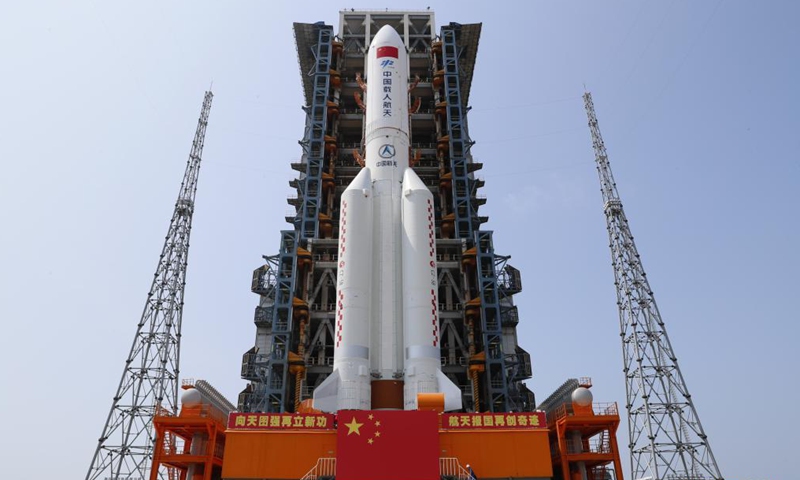
Photo taken on April 23, 2021 shows the combination of the core module of China's space station, Tianhe, and the Long March-5B Y2 rocket after it was transported to the launching area of the Wenchang Spacecraft Launch Site in south China's Hainan Province.Photo:Xinhua
China is set to launch the first section of its own space station – the Tianhe core module cabin—via a Long March-5B launch vehicle from Wenchang space port in South China’s Hainan Province around 11 am on Thursday, China Manned Space Agency (CMSA) announced.
As the centerpiece of an ambitious 2021 in space, China is slated to carry out consecutive missions for the construction of a space station which is to become fully operational by around 2022, exactly three decades after China approved the manned space project in 1992.
The Long March-5B Y2 carrier rocket and Tianhe core cabinet capsule for China’s space station were rolled out to the launch tower in the Wenchang Space Launch Center, Hainan Province on Friday, with pre-launch checkups underway, according to the China Manned Space Engineering Office (CMSEO).
China’s space station is set to operate for 10 years, but can be extended to 15 years under proper repair and maintenance, developers have told the Global Times.
Following the core module’s launch, the cargo spaceship Tianzhou-2 is expected to be sent to space in May if system evaluation goes smoothly. The Shenzhou-12 crewed spacecraft is scheduled for launch in June, sending astronauts to orbit for about three months, during which the regenerative life support system and maintenance will be tested.
China has scheduled 11 launches for space station building in the next two years, including four manned missions and four cargo missions.
China and the United Nations Committee on Peaceful Uses of Outer Space (COPUOS) announced in June 2019 that the first batch of nine international scientific experiments of 17 countries and 23 research bodies would be included in China’s space station.
The first batch of selected space science experiments to fly to China’s space station include Gamma-ray burst polarimetry jointly proposed by Switzerland, Poland, Germany and China and a spectroscopic investigation of nebular gas by India and Russia.
Global Times
